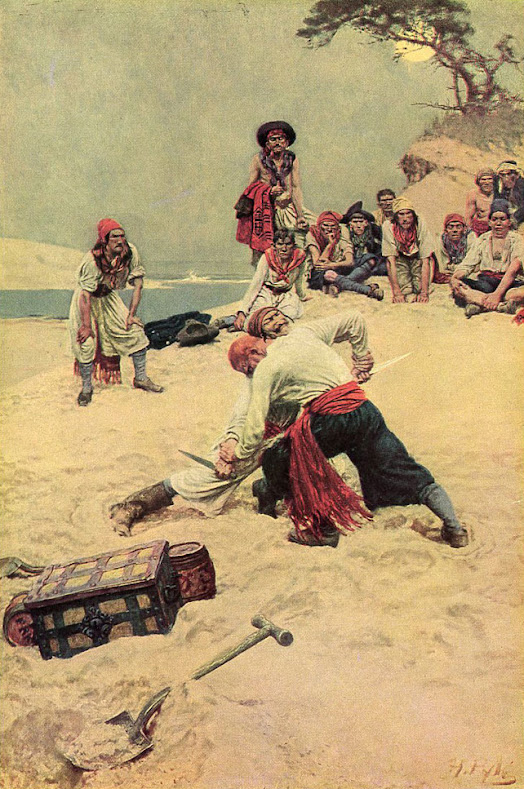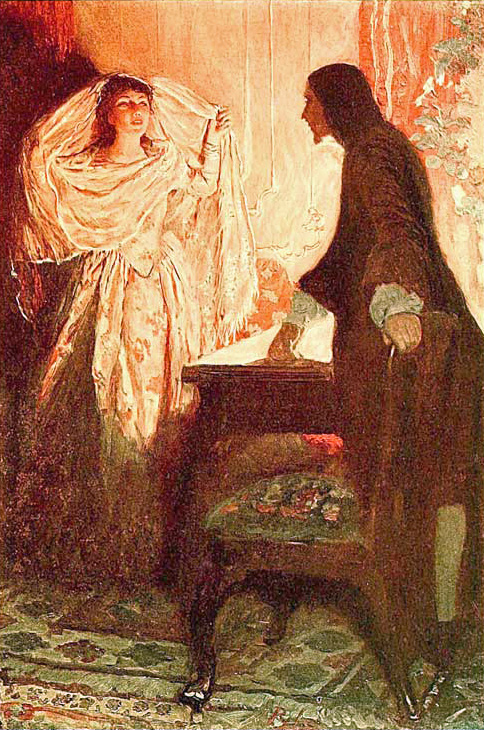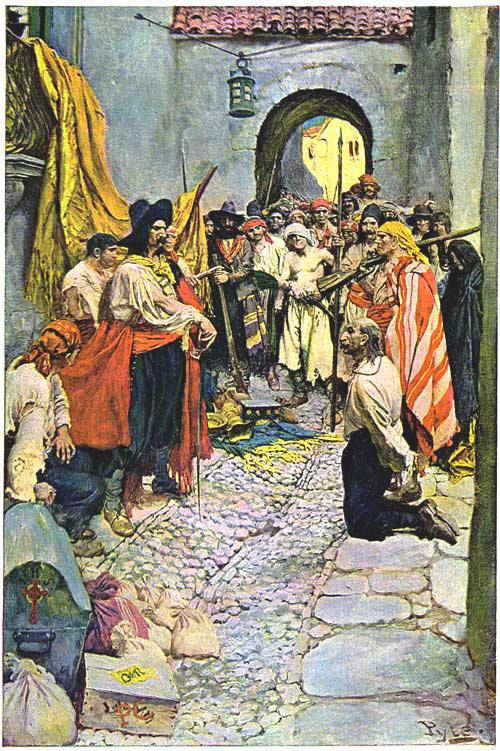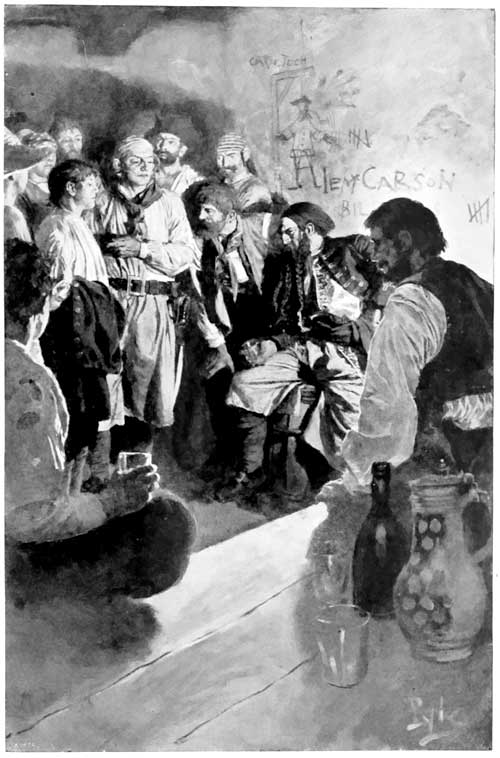Howard Pyle (1853, Wilmington Del. - 1911, Florence) was one of America’s most popular illustrators and storytellers at the end of the 19th century during a period of explosive growth in the publishing industry. His illustrations appeared in magazines like Harper’s Monthly, St. Nicholas, and Scribner’s Magazine, gaining him both national and international exposure. The broad appeal of his imagery made him a celebrity in his lifetime.
Pyle studied at the Art Student’s League, New York City, and first attracted attention by his line drawings after the style of Albrecht Dürer. His magazine and book illustrations are among the finest of the turn-of-the-century period in the Art Nouveau style. Pyle wrote original children’s stories as well as retelling old fairy tales. Many of Pyle’s children’s stories, illustrated by the author with vividness and historical accuracy, have become classics—most notably The Merry Adventures of Robin Hood (1883); Otto of the Silver Hand (1888); Jack Ballister’s Fortunes (1895); and his own folktales, Pepper & Salt (1886), The Wonder Clock (1888), and The Garden Behind the Moon (1895).
In 1894, he began teaching illustration at the Drexel Institute of Art, Science, and Industry. Among his students there wer valet Oakley, Maxfield Parrish, and Jessie Wikcox Smith. After 1900, he founded his own school of art and illustration named the Howard Pyle School of Illustration Art. Scholar Henry C. Pitz later used the term Brandywine School for the illustration artists and Wyeth family artists of the Brandywine region, several of whom had studied with Pyle. He had a lasting influence on a number of artists who became notable in their own right; N.C. Wyeth, Frank Schoonover, Thornton Oakley, Allen Tupper True, Stanley Arthur, and numerous others studied under him.
Later Pyle undertook mural paintings, executing, among others, The Battle of Nashville (1906) for the capitol at St. Paul, Minn. Dissatisfied with his style in painting, he went to Italy for further study but died shortly afterward. Pyle had established a free schoolof art in his home in Wilmington, where many successful American illustrators received their education.
Pyle travelled to Florence, Italy in 1910 to study mural painting. He died there in 1911 of a sudden kidney infection (Bright’s Disease).
For earlier works by Howard Pyle see parts 1-8 also.
This is part 9 of a 13-part series on the works of Howard Pyle:
 |
| 1898 Washington firing the first gun at the Siege of Yorktown Scribner's Magazine November 1898 |
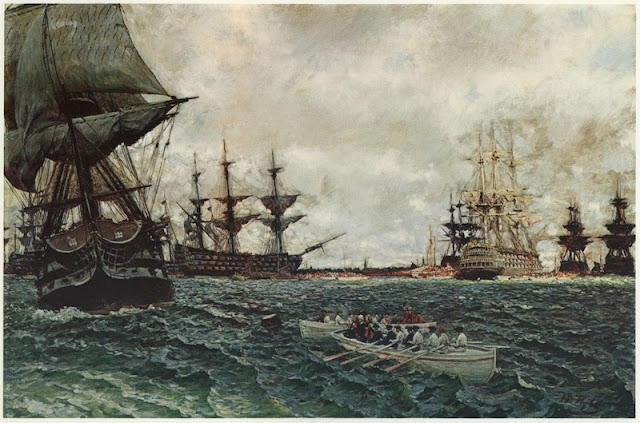 |
| c1898 The Evacuation of Charlestown oil on canvas 59 x 89.5 cm Delaware Art Museum |
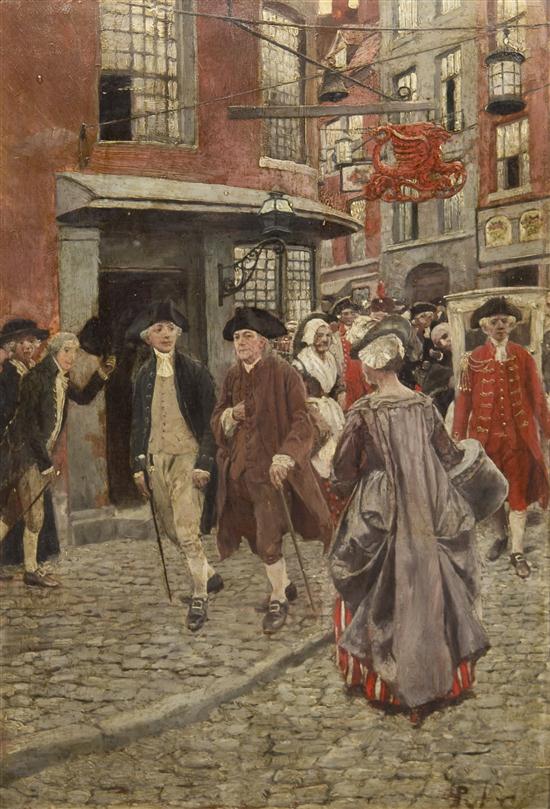 |
| 1899 "The Good, aged Doctor… The Man for the Hour” McClure’s Magazine for December 1899 oil on canvas 46.3 x 31.1 cm |
 |
| 1899 The Dancer Harper's Monthly December 1899 |
 |
| 1899 They Scrambled up the Parapet oil on canvas |
 |
| 1900 “Assassination of William of Orange” from The Rise of the Dutch Republic Harper and Brothers |
 |
| 1900 “His niece had found him lying dead” from the short story “A Life for a Life” Scribner's Magazine |
1900 Erik Bögh, translated from the Danish by Jacob Riis,
"The Pilgrimage of Truth,"
Harper's Monthly Magazine (December 1900):
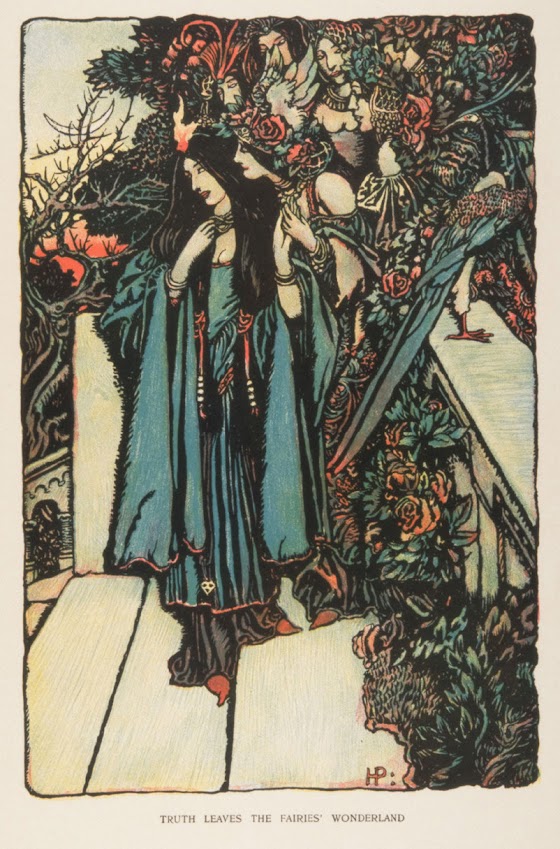 |
| 1. 1900 Truth Leaves the Fairies Wonderland Illustration to Erik Bögh Harper's Monthly Magazine December 1900 |
 |
| 2. 1900 Truth before the King Illustration to Erik Bögh Harper's Monthly Magazine December 1900 |
 |
| 3. 1900 Truth in the Temple Illustration to Erik Bögh Harper's Monthly Magazine December 1900 |
 |
| 4. 1900 Truth before the Seer Illustration to Erik Bögh Harper's Monthly Magazine December 1900 |
 |
| 5. 1900 Truth Went on Her Way Alone Illustration to Erik Bögh Harper's Monthly Magazine December 1900 |
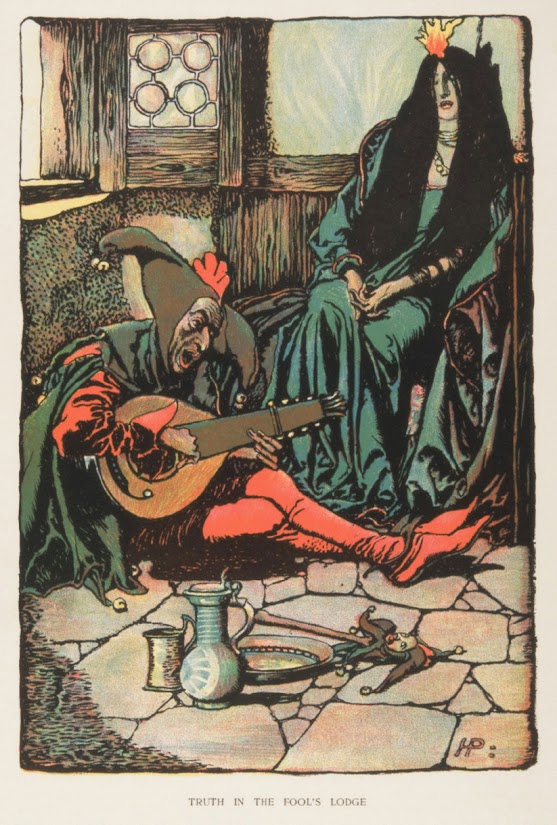 |
| 6. 1900 Truth in the Fool's Lodge Illustration to Erik Bögh Harper's Monthly Magazine December 1900 |
 |
| 1900 He looked down and sang out, “Lower away!” Scribner's Magazine |
 |
| 1900 McClure’s Magazine January issue |
 |
| 1900 To Have and to Hold by Mary Johnston Hard Cover |
 |
| 1900 To Have and to Hold by Mary Johnston Title Page |
 |
| 1901 A Dream of Young Summer oil on canvas 55.9 x 20.5 cm |
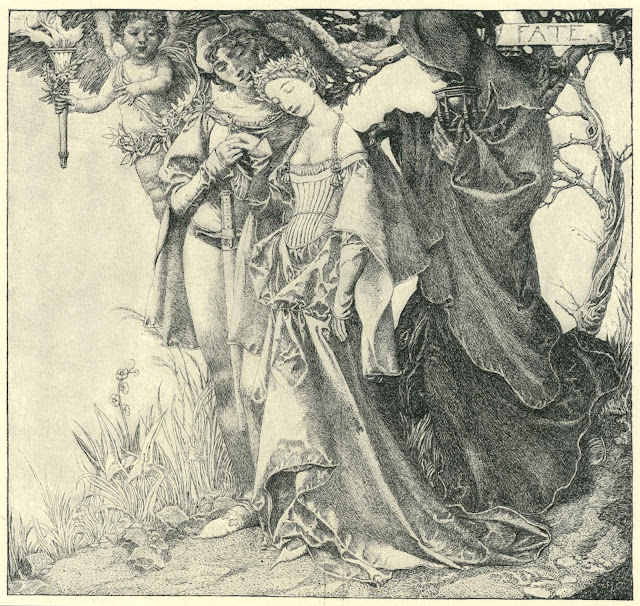 |
| 1901 Margaret of Cortona Harper's Monthly, November 1901 |
 |
| 1901 Washington's Retreat through New Jersey wood engraving 8.9 x 14.4 cm ( image ) Fine Arts Museums of San Francisco, CA |
 |
| 1901 “Then appeared suddenly, a little beyond the light of the lamp, the spirit of Kurban Sahib” for "Sahib's War" by Rudyard Kipling Collier's Weekly December 7 1901 |
 |
| 1902 Cap'n Goldsack Harper's Monthly, July 1902 |
 |
| 1902 In the Valley of the Shadows The Century Magazine, December 1902 |
 |
| 1902 “We started to run back to the raft for our lives” from “Sindbad on Burrator” by A. T. Quiller Couch Scribner's Magazine, August 1902 |
1902 North-Folk Legends of the Sea Harper's
Monthly Magazine January 1902:
1903 Howard Pyle's Book of Pirates:
 |
| Hard cover |
 |
| Title page illustration |
 |
| 1903 At the Gate of the Castle oil on canvas 29.7 x 15.7 cm Delaware Art Museum |
 |
| 1903 The Nation Makers oil on canvas published in Collier's Weekly, June 2 1906 |
 |
| 1903-05 Genius of Art mural Delaware Art Museum |
 |
| 1903-05 Genius of Art detail mural Delaware Art Museum |
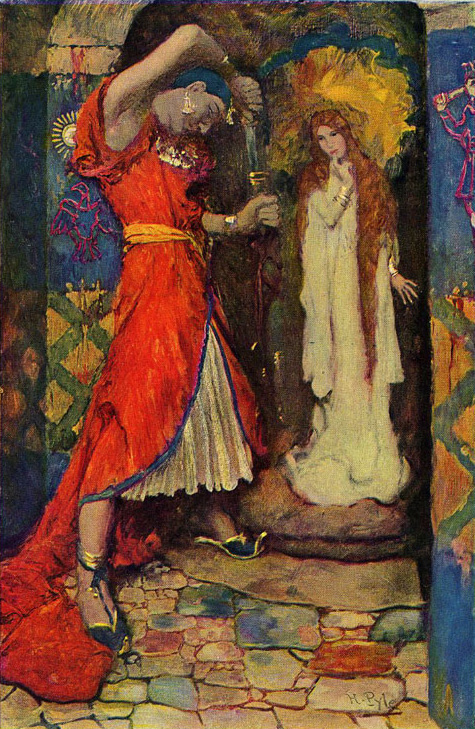 |
| 1904 "The drawing of the sword" from “The Sword of Ahab” by James Edmund Dunning Harper's Monthly Magazine, August 1904 |
 |
| 1904 "The King himself hauled me out of gaol" from “In Necessity’s Mortar” by James Branch Cabell Harper's Monthly Magazine, October 1904 |
 |
| 1904 "Villon - The singer Fate fashioned to her liking" from “In Necessity’s Mortar” by James Branch Cabell Harper's Monthly Magazine, October 1904 |
 |
| 1904 Guarded by Rough English Soldiers oil on canvas 62.8 x 40.6 cm Private Collection |
 |
| 1904 “Catherine de Vaucelles, in her garden” from “In Necessity’s Mortar” by James Branch Cabell Harper's Monthly Magazine, October 1904 |
 |
| 1904 “Her whisper was so soft he only guessed the words“ from "The Stairway of Honor" by Maud Stepney Rawson Harper's Monthly Magazine, January 1904 |
 |
| 1904 “I know thy heart, that thou dost love me well” from The King's Jewel Harper's Weekly December 10, 1904 |










